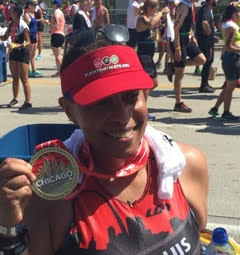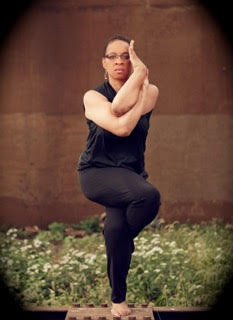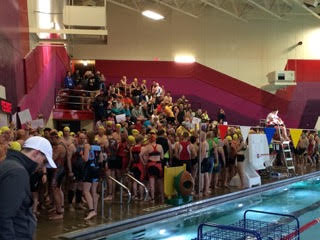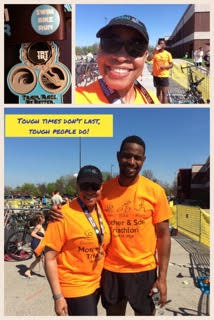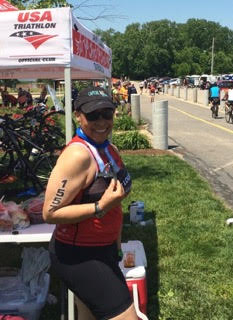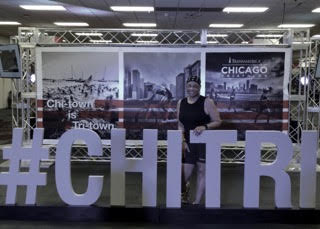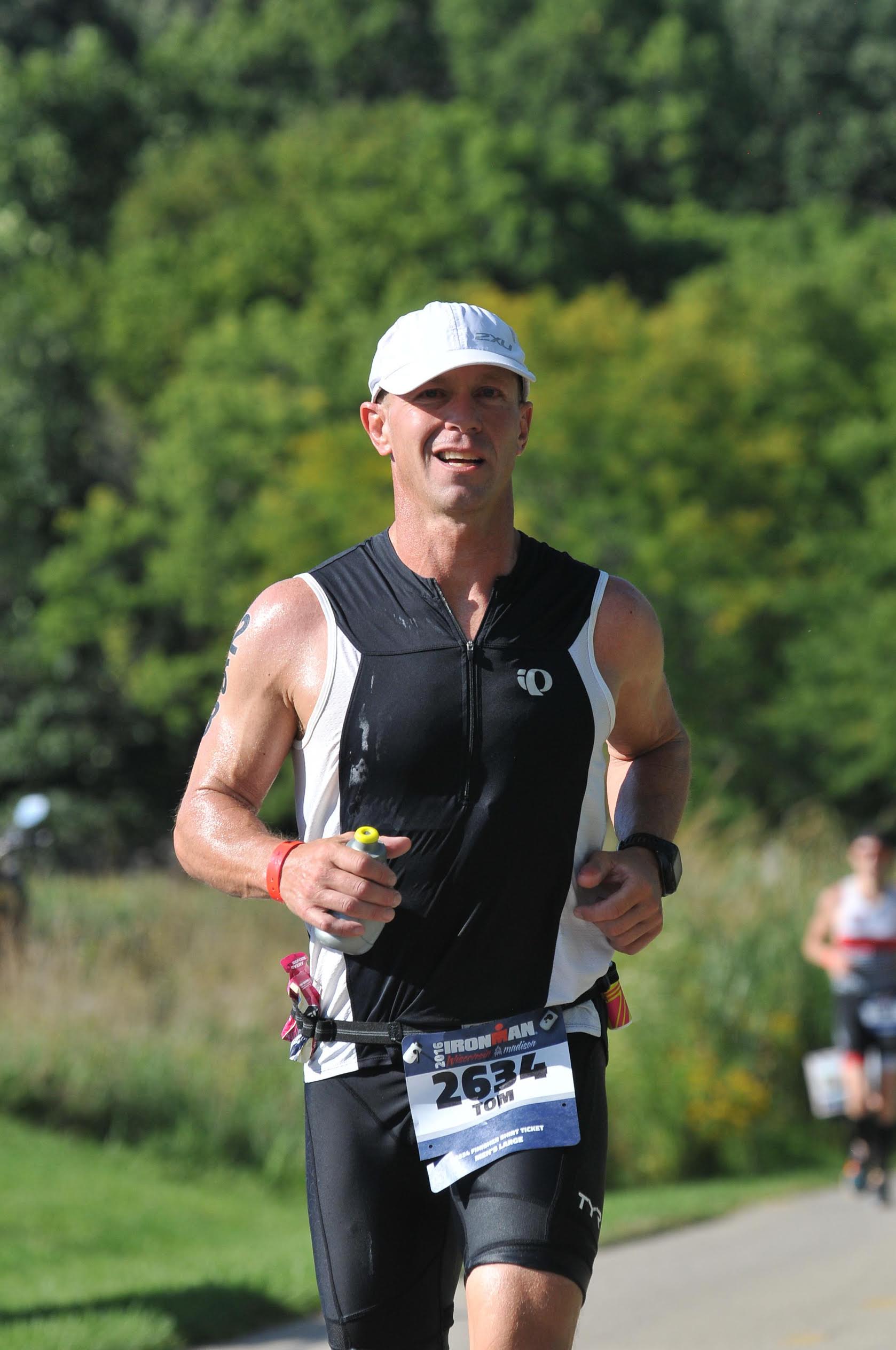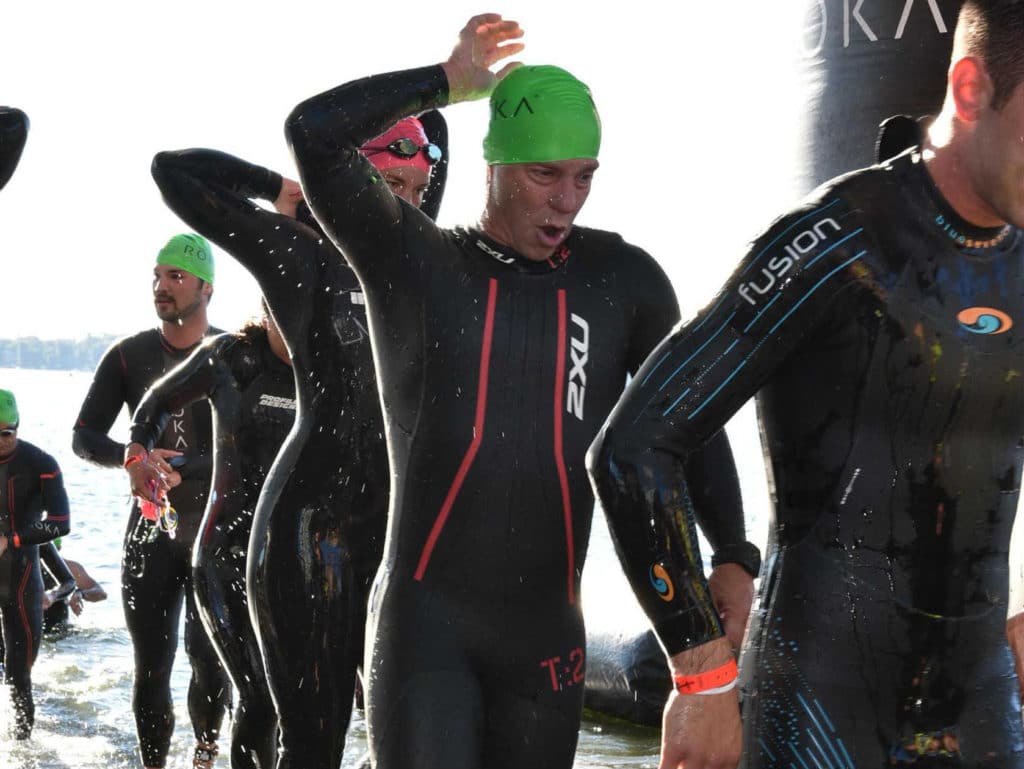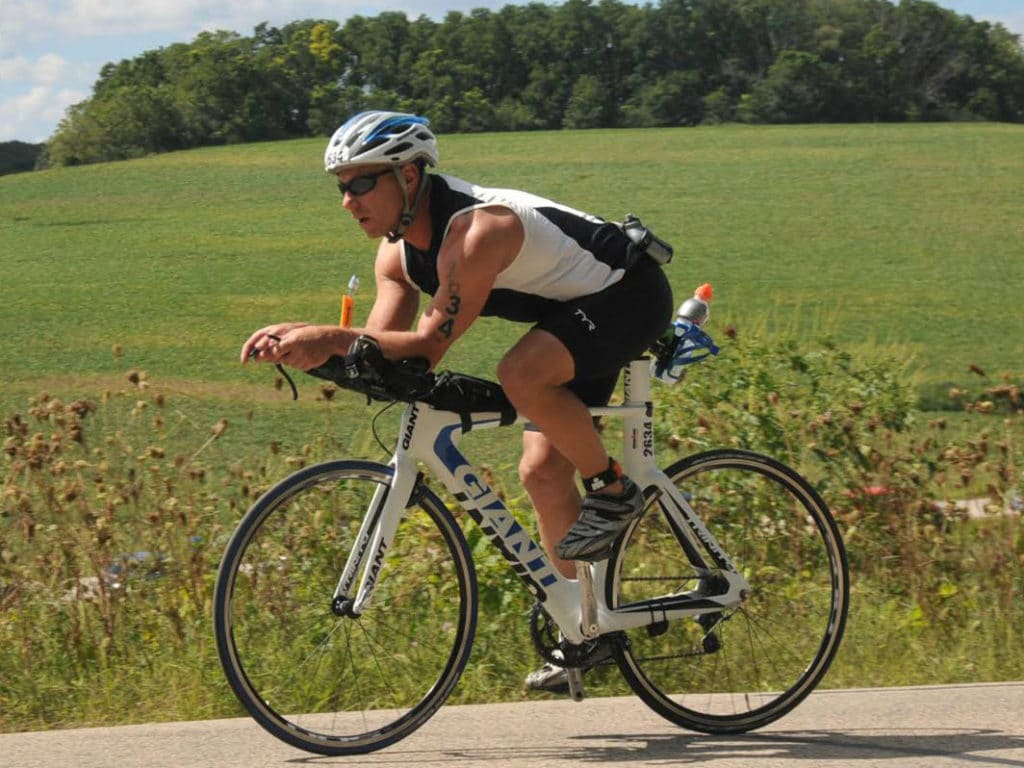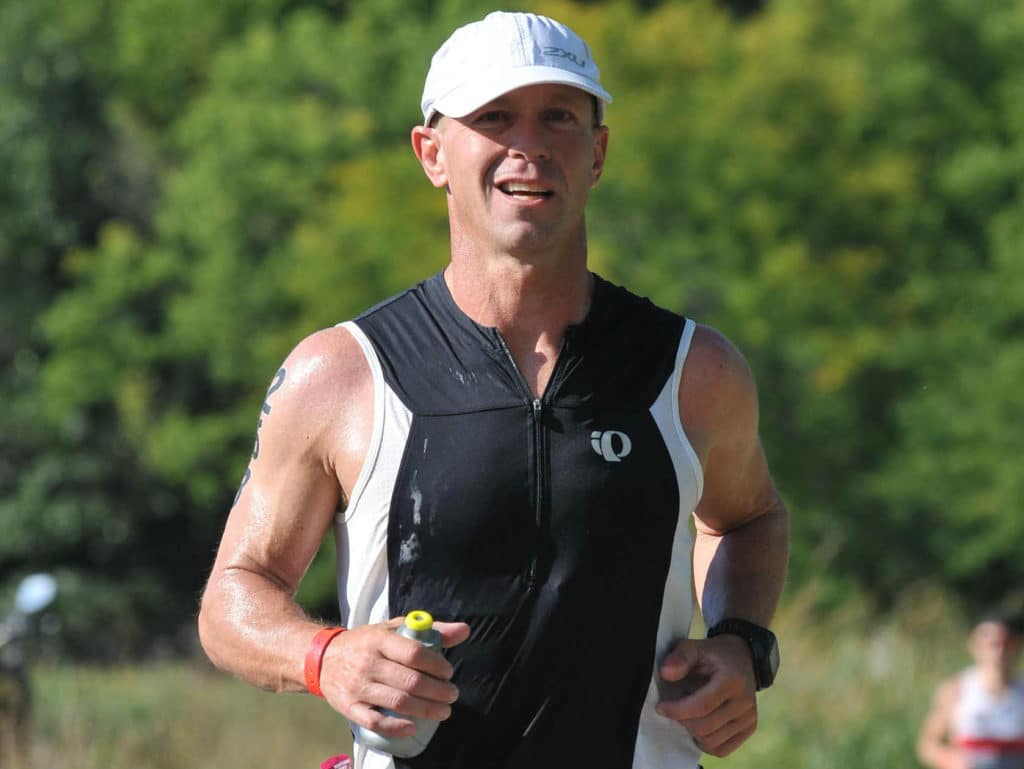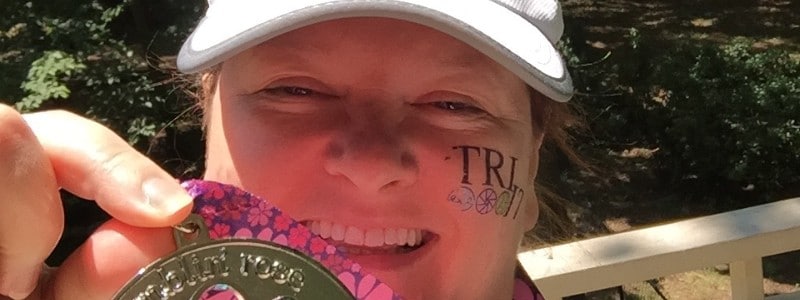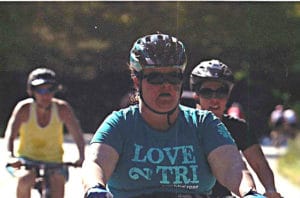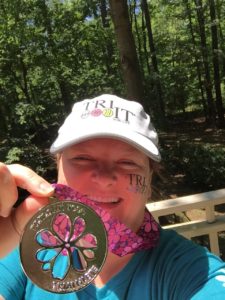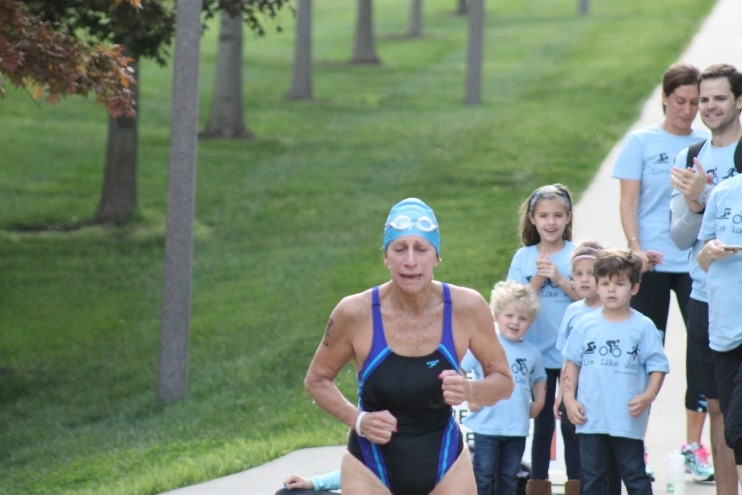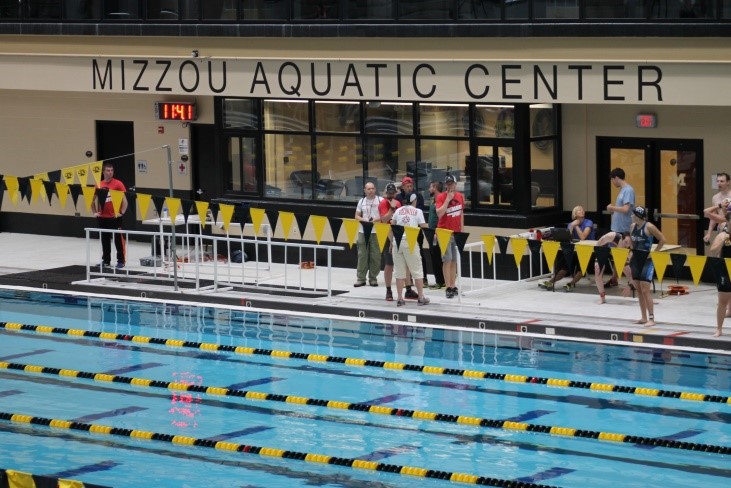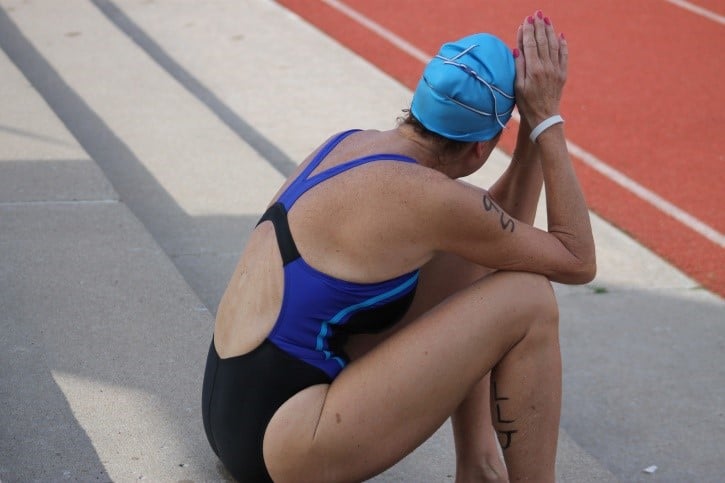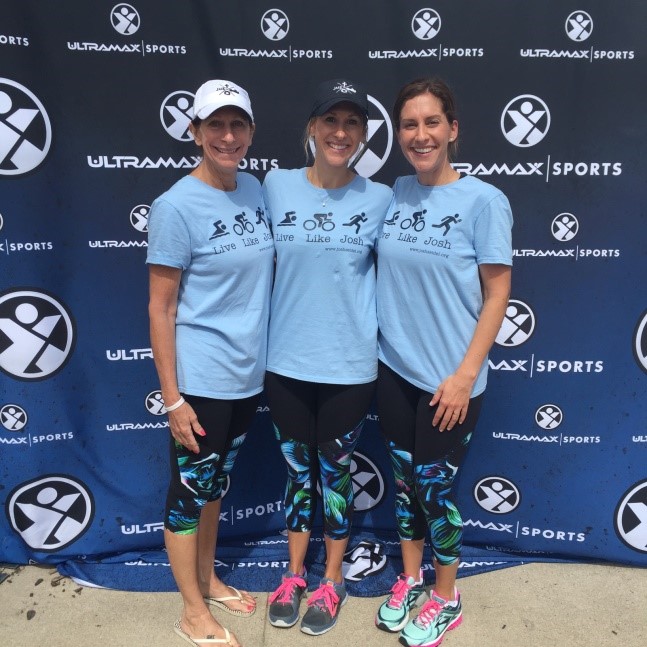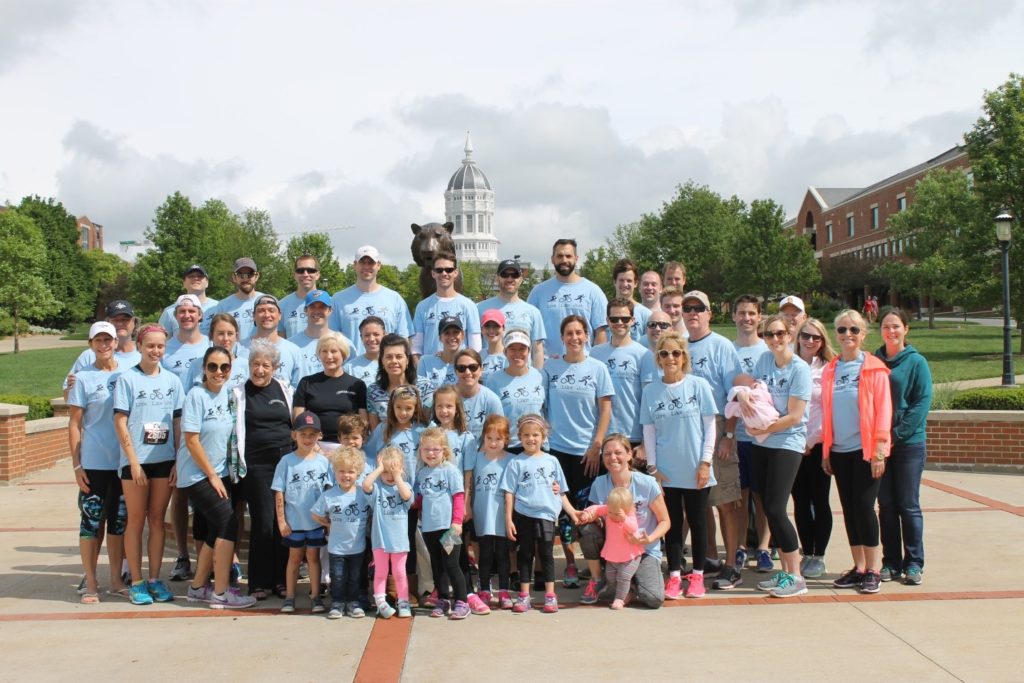Aging Athletically: Becoming a Sexagenarian and a Triathlete
By Jessica Perkins – In 2014 before my 58th birthday, I made the decision to complete a triathlon before my 60th birthday in June 2016. My decision wasn’t really out of the blue because for many prior birthdays, I always completed a physical challenge, which, for me, equated to feeling alive and functioning.
Learning About Triathlon
At the time of my decision, I knew very little about triathlons, other than the swim-bike-run sequence. While I wasn’t a couch potato – I had slogged a few 5Ks and practiced Bikram yoga 3 to 4 times weekly with a few 30 to 60-day challenges over the previous five years – my swimming, biking and running were more recreational than competitive. Luckily, in this era of having information at our fingertips, I conducted Internet research and watched YouTube videos to learn more. One valuable piece of information gleaned was triathlon distances vary from a combined mileage total of approximately eight miles (super sprint) to 140.3 miles (Ironman). I thought, “Whew, at least my goal was doable because all I knew about was the Ironman held in Kona.” Also, I learned that triathlons could be fully and partially indoors, as well as fully outdoors.
After my research, I realized my goal was somewhat of an anomaly for many reasons. I am an African American female who is slightly overweight and was approaching sexagenarian status. The demographics of an average triathlete don’t even come close to my profile. According to the 2015 USA Triathlon (USAT) Membership Demographics Survey, 6% of the registered females were between 50 and 59 years of age and only 1% were between 60 and 69 years of age. By the way, participating in triathlons later in life means fewer competitors in your age group. There is always a chance you will place in the top three. “Podium, baby!”
Additionally, in 2009, USAT reported that only ½ of 1% (.005) of triathletes were African Americans! Ironically, this statistic was the impetus for the 2014 formation of the Black Triathletes Association, a social networking group and official USAT club of nearly 3,300 members who share triathlon related information daily through Facebook and who have meet-ups at many local, national and international events.
Of course, you could ask, “Why so few African Americans or so few females over the age of 50?” There are many barriers to entry for the demographics mentioned, but that could be the focus of another article. These statistics did become another goal for competing – showing others, especially those matching my demographics, that it could be done.
Getting Started
Like many triathletes, my Achilles heel was swimming. I enrolled in group classes, took private lessons, hired a triathlon coach and even attended a Total Immersion (TI) weekend boot camp during 2015. I figured if I didn’t survive the swim, I couldn’t cycle, a sport I enjoyed leisurely. My swimming progress was as slow as molasses, but I was progressing, just not as rapidly as I wanted. I swam 2 to 3 times weekly, but after TI camp I increased my training to four times weekly.
The motivational literature says “set a goal”, then train for that goal. I registered for Try Tri Edwardsville’s super sprint (150-yard pool swim, 10-mile cycle, and a two-mile run) in April 2015. As the date approached, I began second guessing myself and I decided not to participate. Although the date came and went and I had my first DNS (Did Not Start), I did observe the race as a spectator and realized, I was more than capable of swimming the distance.
Lesson Learned: Trust your training and always show up unless you are physically unable.
Being Active Yields Unexpected Benefits
Not being deterred by my DNS, during the next three months, I trained in all three sports and prepared for another pool swim triathlon in August. The distance was a bit longer, but I felt confident and ready.
However, in July 2015, I contracted a virus that developed into Guillain-Barre, an autoimmune disease attacking the peripheral nervous system. Within days and for three weeks, I was in unbearable pain all over my body and my right arm was paralyzed! Before being diagnosed, I wondered if my goal would be thwarted before I even approached the start line. Finally, I went to a neurologist and she ran a nerve conduction test and confirmed that I had Guillain-Barre.
My results were so low that I should not have been able to walk unassisted or even balance on one foot. But I did. After telling the neurologist my story, she surmised that my years of yoga and recent triathlon training probably made me stronger than most and I was able to fight off the virus without any medical intervention. It took me about three months to regain my strength fully and in September of 2015, I was back in training mode.
Lesson Learned: Stay active because you never know how that strengthens you physically and mentally for other challenges in life.
Participating in My First Indoor Triathlon, Finally!
The body is a wonderful healing machine because, in December 2015, I completed my first indoor triathlon (300-yard pool swim, 10-mile spinning cycle and 3-mile treadmill run)! Funny, I did not feel like a triathlete, just someone who was a multi-sport athlete. Why? I was slow and sore afterward! I thought falsely that if I trained, I would be fast and pain-free.
Throughout the winter, I competed in three more indoor triathlons and got stronger and faster. I was ready for redemption at my first and only DNS race from earlier in 2015.
Progressing to the Big Leagues – Try Tri Again
I registered for Try Tri Edwardsville’s super sprint in April 2016. Much to my surprise, my 27-year old son, Chris, who was attending graduate school in New York, flew in and raced with me. We both finished the race – he, the sprint and me, the super sprint. It felt amazing to finish. Even though I was one of the last ones, I wasn’t THE LAST!
Progressing to the Big Leagues – First Open Water Triathlon
My first OW (open water) sprint triathlon – the St. Louis Inaugural Triathlon – was in May 2016. With it being only 10 minutes from my home, I had to participate. But the open water wasn’t my friend. I had three practices in open water prior to the race and all were dismal. Being unable to sight and touch the bottom made me panic. Unfortunately, the practice the day before the race was the worse one.
I came home that evening doubting my skills and I almost decided another DNS would be a part of my record. Luckily, my significant other talked some sense into me and I participated with my snorkel! It took me one hour to swim 750 meters! This was a newbie friendly race and as long as a swimmer wasn’t a detriment to themselves or others, the kayakers would stay with the swimmer. I finished my first open water triathlon by the grace of God, a lifeguard named Phillip and my sheer determination not to ever have another first attempt at an OW triathlon.
Lesson Learned: Build your support network – friends, family members and tri club members. When you second guess yourself, they will encourage you, challenge your thinking and if necessary, kick you in the behind!
Finally, I felt like a triathlete, not just a multi-sport athlete. Even though I wasn’t quite 60, the number on my leg said I was! After my first OW experience, I vowed never to use the dreaded snorkel again in a race. I looked like a waterlogged elephant!
Participating in My First National Race
Before my “A” race, the Chicago Triathlon, I participated in another local OW triathlon in July. The Chicago Triathlon is/was an event to remember. First, it was my first non-local race; second, with more than 9,000 triathletes participating over two days, it was the largest; and third, it had the largest expo, I have ever seen. Note to self…save a little extra from the triathlon budget for the larger races.
In Chicago, I also met some BTA members who had traveled from all over the U.S. to participate. Luckily, BTA was able to race in the charity wave. Why was that important? My swimming still wasn’t as strong as it needed to be and by racing in the earlier charity wave, I was guaranteed to make the cut-off. The swim was okay, the cycling was amazing as the route was on Lake Shore Drive and the run was uneventful, but steaming hot. I finished triathlon #10!
Lesson Learned: Enjoy the journey, regardless of how slow the progress. You will eventually arrive.
Finishing My First Competition Year
As I closed out 2016, I competed in a race that occurs in both the spring and fall of the year. I was hoping to show great improvements across all sports. Unfortunately, a late flight the night before and high temperatures and humidity during the race slowed me down considerably. At the finish line, I had a slight asthma attack and I hadn’t experienced breathing problems in more than five decades. Again, I finished!
Lesson Learned: Hydrate, hydrate, hydrate, at least three days prior to a race. Always listen to your body and adjust, as necessary.
Reflecting on the Journey
Starting with a seedling of a thought three years ago, my triathlon garden has bloomed, but not as I expected. If you are a gardener, you understand the first growth year of a perennial is a hit or miss. In the second year, that perennial is normally very healthy and grows larger; and in the third year, you might be able to divide it and start new plantings. With my newfound experience and knowledge, I can now recruit others to tri-life, the available resources and what it can offer. Additionally, I have made a point to debunk many triathlon myths about costs, training, and ability, so others might consider this journey.
Since my first triathlon in December 2015, I have completed 13 races and by December 2017, I will have a least three more under my belt. In the first year, my goal was to finish each race and I accomplished that. Now, in my second full year, my goal is to improve my time while managing my nutritional needs before, during and after an event and hopefully, finish the year with an Olympic distance race. Mentally, I am preparing for a HIM (half Ironman) for late 2018. My HIM registration and participation will depend on my ability to meet my speed, distance and nutritional goals in 2017.
Takeaways
Here are my takeaways from the first two years…
- Anyone, regardless of age and physical ability, can compete in a triathlon with sufficient training. Start with short distance pool swim triathlons and work your way to the longer distances with open water swims. You have to want it bad enough and not be afraid to try.
- Mental fortitude and grit are just as important as physical ability. In the past two years, my focus has been on improving my swim technique and I have trained minimally for the bike and run. Yet, I have finished all my races because my mind tells me I can and I will. For the second year, in order to achieve my goals of faster speeds and longer distances, I am training at least three days weekly in each sport. After the swim, you can push through the cycle and run, but without sufficient training, your speed will never increase.
- Taking on a challenge bigger than you expect to handle exposes you to new people and perspectives. It keeps you physically and mentally growing. I have met so many amazing and inspiring athletes (young and old) who all have their own reasons for taking this journey. Learn their stories and when it gets tough, remember someone has walked in your shoes before.
- Finally, don’t just race, volunteer at races. I have just as much fun cheering other triathletes to their victories because I understand what it means to live to “tri” another day.
Much Success to All!
You may also be interested in these posts
- How I Prepared for My First Triathlon by Liz Lawson
- 8 Reasons to Tri in the UK
- 15 Reasons for Those 50 and Older to Do Triathlons

